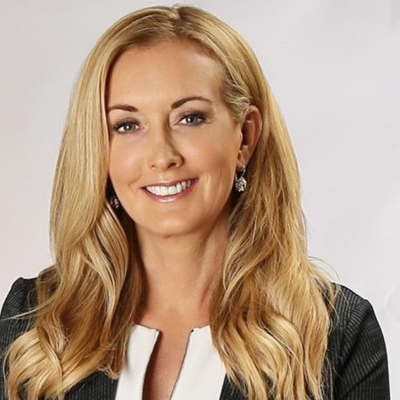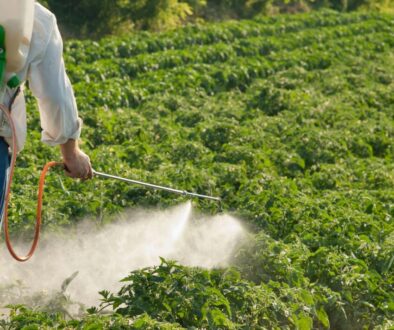How “Big Ag” pollutes America’s water, and makes money doing it
 It’s been 33 years since an Iowa State University agronomist named Fred Blackmer thought he’d struck gold for Midwestern corn farmers. Using a fairly simple three-step method, Blackmer developed an analytical tool that could accurately tell farmers exactly how much fertilizer their fields needed to produce abundant harvests each season.
It’s been 33 years since an Iowa State University agronomist named Fred Blackmer thought he’d struck gold for Midwestern corn farmers. Using a fairly simple three-step method, Blackmer developed an analytical tool that could accurately tell farmers exactly how much fertilizer their fields needed to produce abundant harvests each season.
The analytics Blackmer perfected showed not only how much fertilizer the corn crops would need to meet production targets, but also exposed how much could be wasted. Blackmer ultimately determined that farmers were applying a staggering 500 million excess pounds of nitrogen each year, a practice that not only wasted farmers’ money but also wreaked havoc on the environment as the nitrogen not taken up by plants drained from farm fields to contaminate rivers, lakes, and streams.
Despite what Blacker saw as obvious benefits to producers, not to mention the environment, his method failed to gain significant traction in farm country. Farmer allegiance to the excessive fertilizing practices pushed by the so-called “Big Ag” industry and aligned academic institutions left Blackmer’s common sense approach on a shelf gathering dust. He died in 2006.
State and federal data now show that since 1990, nitrogen spread on fields in Iowa and nine other major US corn-growing states has increased 26%, with more nitrogen than ever pouring off the land and polluting US waters. Demand for corn is high, both to supply ethanol refineries and to feed industrial livestock operations that add to water contamination themselves through manure runoff, according to the US Department of Agriculture.
In Iowa alone, according to state research, farmers apply about 2 billion pounds of commercial nitrogen annually to corn fields, and much of it is ending up in waterways that flow all the way to the Gulf of Mexico, worsening the conditions in a 6,500-square-mile “dead zone” where the waters are so oxygen-deprived that they can’t sustain marine life. Iowa contributes almost a third of the nitrogen scientists say causes the dead zone.
“Ground zero”
“Iowa is sort of ground zero for the interface between ag and environment,” said Matt Liebman, a former colleague of Fred Blackmer’s who retired as a professor of agronomy at Iowa State University (ISU) in 2021.
“There’s a lot of money involved. The people who sell inputs and the people who process and distribute commodities, livestock and crops are very interested in making sure that the system is arranged so that money flows in particular ways,” Liebman said. “One side is real small and the other side is very well funded. It can get pretty ugly.”
In Iowa, as in other corn-growing states, many farmers often apply nitrogen in quantities not necessarily aligned with crop needs but in amounts designed to overload the soil in case heavy rains wash away needed nutrients. Farmers will apply fertilizer to fallow fields in fall when there is nothing growing, hoping the ground will absorb and hold on to the nutrients, and then spread fertilizer again on the same fields in the spring. The goal is to maximize yield – how much corn they can produce per acre.
A 2014 ISU farmer survey underscored how dependent growers are on over-applying fertilizer. “The perceived economic risks of under-application are high,” the survey reported. “These results likely reflect a reality that the practice of “insurance” over-application is simply a part of staying in business.”
In contrast, Blackmer’s research showed that applying more fertilizer than plants needed had no effect on yield. “What we’ve found is that farmers can substantially reduce their average rates of fertilization and actually end up with higher yields,” he said in a 2002 interview with an Iowa media outlet.
Blackmer also recognized that over-fertilizing was causing an ecological calamity. “What we’re finding is some farmers can lose 70, 80 or 90% of what they put down. One of the most surprising things is many times these farmers don’t even know that they have lost it,” Blackmer added.
A simple concept
Blackmer’s “late spring nitrate test” was simple in concept. His test focused on one essential data point: the optimum amount of nitrogen in soil to grow the most corn. His science showed that optimum soil concentration is 20 to 25 parts per million.
Blackmer developed three steps to get there. First, he took soil samples from farm fields, which typically showed background nitrogen levels at under 10 parts million. Second, he developed calculations to add fertilizer in precise amounts to increase soil nitrogen concentrations to the optimum level and sustain it to meet the farmers’ yield goal, whether it was 150, 200 or 250 bushels per acre.
Then he recruited farmers to apply a little bit of fertilizer at planting and a precisely measured volume of fertilizer at least 30 days later, when fast-growing plants were 6 to 12 inches tall. In most cases the test results indicated farmers should spread 60 pounds per acre to grow 150 bushels per acre, or as much as 80 pounds per acre to achieve 250 bu/acre of corn. Corn growers typically apply double that amount.
Among the farmers that experimented with Blackmer’s nitrate test, was Larry Neppl, an Iowa corn grower who saw firsthand that that applying 60 pounds of nitrogen per acre on part of his crop translated to better production than applying double that amount.
“It told me we did not need that extra nitrogen,” Neppl said.
The amount of money wasted by farmers on unneeded fertilizer, at the current price of $1,100 per ton, is estimated at over $400 million annually.
But the over-fertilization of US corn country is not only costly for farmers. The United States has spent over $500 million since 1997 to reduce the expanse of the ocean dead zone that is fed in large part by the nitrogen contamination flowing from Iowa and the other Corn Belt states.
That same tide of nutrients is also expensive for local and state governments with fertilizer-related contamination affecting more than 7,000 drinking water wells in Iowa and an estimated 30,000 private wells in Minnesota, 42,000 in Wisconsin, and thousands more in Illinois, Nebraska, and Missouri. Corn Belt cities are forced to spend tens of millions of dollars and raise residential and business water rates in order to drill deeper wells or install and maintain nitrate removal and filtration systems to protect municipal drinking water.
There is also a cost to human health. The nitrates from the fertilizers also are implicated in the rising rates of cancer in the Corn Belt. In Nebraska scientists have linked exposure to nitrates to a number of soft tissue malignancies. Nebraska has one of the highest rates of pediatric cancers in the US. Iowa announced in February that it now ranks second in the incidence of cancer, and is the only state where incidences increased from 2015 to 2019.
“The heart of what is causing all of this is a cropping system and an economy that is inherently polluting,” said Kamyar Enshayen, director of the Center for Energy and Environmental Education at the University of Northern Iowa, “It’s not something a conscientious farmer can fix. We have all these incentives coming in to keep doing more of this.”
(Featured image, by Keith Schneider, shows algae choking the North Fork of Crow River in Minnesota, a consequence of nutrient pollution from farm fields. Schneider, a former New York Times national correspondent, is senior editor for Circle of Blue. He has reported on the contest for energy, food, and water in the era of climate change from six continents. )
(This report, co-published with Circle of Blue, was made possible and also co-published by the Alicia Patterson Foundation. It is part of an ongoing series looking at how changing agricultural policies are affecting environmental health.)





July 30, 2023 @ 11:51 am
7/30/2023 The Powerful Chemical Companies in the USA with their Lobbyists and > Billion-dollar industry hold sway over our USDA, FDA, EPA, Farmers and our local Water Management County Commissioners. The EPA helped pass the Federal Clean Air & Clean Water Act Standards limiting the amount of any poisonous, dangerous and toxic chemicals emitted/dumped into our drinking waters, our Air and our lands. Remember, the Air and Water does not belong to our industries or corporations, but they have been dumping their toxic, poisonous and dangerous chemicals openly, unchecked/monitored and legally into our air, drinking waters and lands for about 275 years as part of their industry processes; textile dying & other fabric production, single use plastics & plastics, corporations polluting our drinking water with PFAS, USDA all form of chemicals from primarily growing our foods with pesticide, fungicides, weed killers, PFAS, ‘Forever Chemicals’ that are on all our vegetables and fruits legally & can’t be completely washed/cleaned off our foods and these chemicals being dumped, leached, runoff into our drinking waters & more, except for Organically Certified vegetables and fruit grown in our country. These chemicals also have long half lives and do not break down in the soil for many years. The grains that are grown to feed our cows, pigs, chickens, etc. are also being drenched in these poisonous, toxic, dangerous chemicals openly, legally and effecting the meat we eat. It is very difficult to rein in our Powerful Chemical Companies, but it must be done to protect the health of people, children, wildlife, fish, seafood and domestic animals. Independent Research Labs are testing specific chemicals and are finding in their results these chemicals produce: cancers, neuro-Distruptors, etc. A complete review of the chemicals being used to grow our foods, domestic animal’s food, furniture manufacturing, Textile production/manufacturing with plastic and microbeads washing into our waters and out to our oceans and have been found inside our seafoods and humans bodies and more products being manufactured in the USA. Environmental Lawyers are suing individual chemical companies due to the cancerous nature of their chemicals, and now the Chemical Companies are counter suing that they do not recognize/accept the results of their independent research labs.